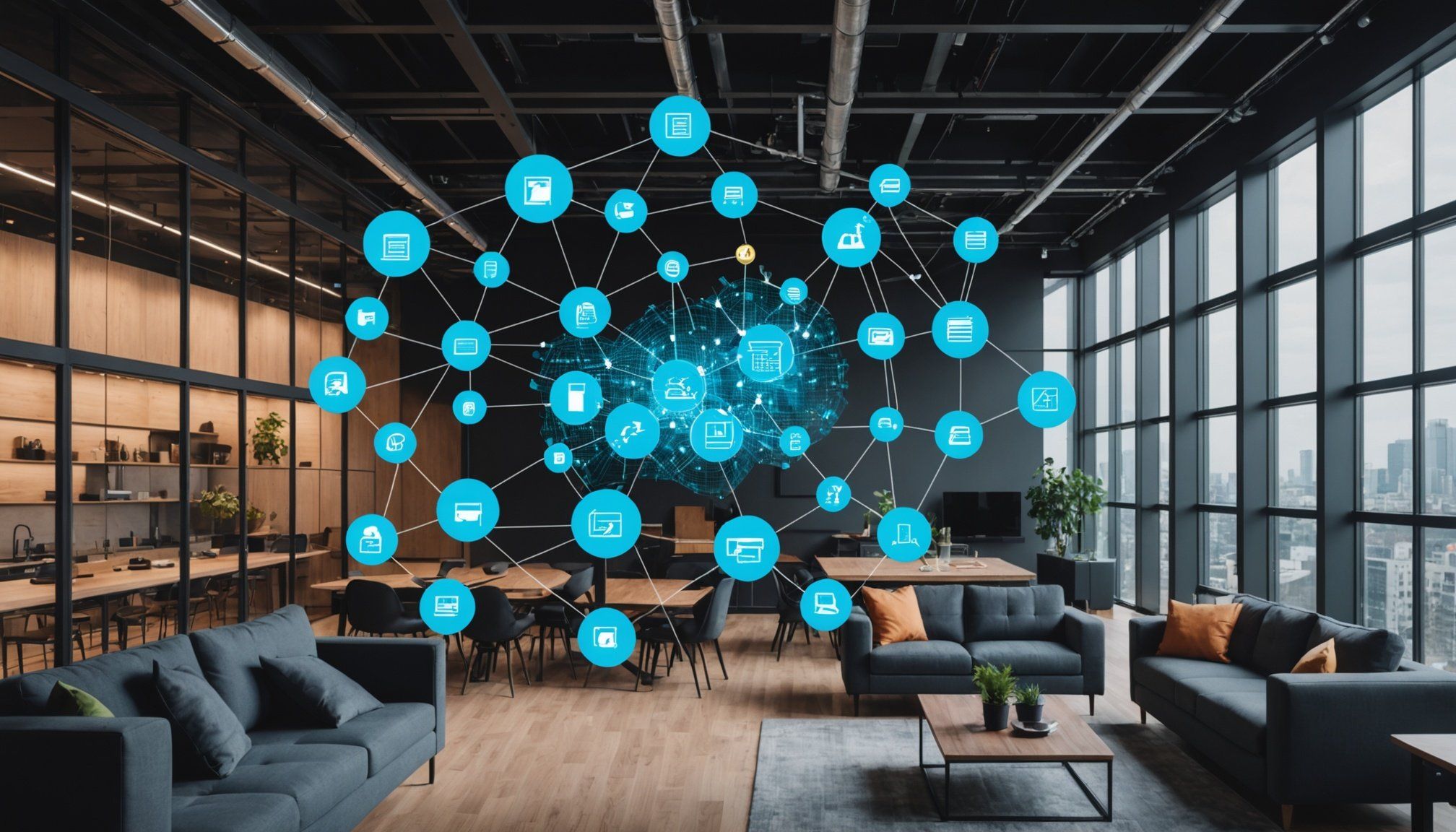Overview of IoT in Building Management
In recent years, IoT (Internet of Things) has significantly transformed the landscape of building management, embedding smart technologies into traditional structures. IoT refers to an interconnected network of devices that collect and share data, providing insights and enhancing operations. Within building management, IoT enables improved efficiency, comfort, and sustainability.
The scope of IoT in building management is vast, encompassing various systems that work harmoniously. Key components include sensors, smart thermostats, energy meters, and automated control systems. These elements collaborate to monitor and manage lighting, heating, ventilation, and security systems. By utilising IoT, building managers can optimise energy usage, predict maintenance needs, and enhance occupant experiences.
Topic to read : Revolutionizing cancer treatment: discover the latest breakthroughs in nanotechnology for drug delivery systems
The evolution of building management through IoT has also led to more predictive operations. For instance, maintenance can be scheduled before a system fails, reducing downtime and repair costs. Smart technologies enable real-time monitoring and analysis, facilitating data-driven decision-making. As technology continues to advance, the potential for IoT to revolutionise building management practices only grows, making buildings safer, more efficient, and environmentally friendly. This progressive shift suggests an exciting future where smart technologies become the standard in managing built environments.
Innovations in Smart Technologies
Smart technologies have revolutionised how we interact with our environments. Notably, automation plays a critical role, enhancing convenience and efficiency. These innovations span various domains, creating a seamless home ecosystem.
Also read : Harnessing blockchain technology: revolutionizing collaborative transactions in supply chain management
Smart HVAC Systems
Smart HVAC systems showcase incredible advancements in technology and energy efficiency. They use automation and real-time data to monitor and adjust heating and cooling, saving energy and reducing costs. By integrating with IoT devices, they can predict user behaviour, ensuring optimal comfort without unnecessary energy consumption. Users can remotely control their systems via smartphones, allowing personalised settings regardless of their location.
Intelligent Lighting Solutions
Intelligent lighting solutions leverage smart technologies to create energy-efficient illumination. Automation enables lights to adjust based on natural light levels or occupancy, ensuring lights are only on when needed. This reduces energy bills and enhances sustainability. Compatibility with IoT lets users customise lighting through voice commands or apps, adding a layer of convenience.
Advanced Security Systems
Advanced security systems benefit immensely from automation and smart technologies. They provide real-time data, ensuring that any breach is reported instantly. Users gain peace of mind with features like facial recognition, motion detection, and remote access. Moreover, integrating IoT enhances security measures while efficiently connecting with other smart home features.
Case Studies Showcasing IoT Transformations
Examining real-world examples of IoT in action reveals profound transformations across sectors. Let’s delve into compelling case studies that highlight the different ways IoT is reshaping environments.
In the realm of residential buildings, IoT has revolutionised daily living. Imagine a home where everything communicates seamlessly. Automated lighting systems, intelligent thermostats, and smart security all blend to create convenience and energy efficiency. A notable case involves a high-rise in a bustling city where IoT integration reduced energy usage by 30% in just six months, showcasing the transformative potential.
Commercial spaces, too, have seen remarkable success stories. Retail giants employ IoT for inventory management, using sensors to track stock and predict consumer trends with surprising accuracy. For instance, a leading retailer implemented IoT to monitor foot traffic, adjusting staffing levels in real-time, thus enhancing customer experience and boosting sales by 15%.
On the flip side, not every IoT journey is without hurdles. A few implementation failures have occurred due to inadequate planning and insufficient training. Lessons learned emphasise the necessity for proper stakeholder engagement and robust cybersecurity measures. Comprehensive foresight and strategic management significantly amplify the chances of successful IoT deployment, turning potential pitfalls into stepping stones.
Benefits of IoT in Building Management
Building management has witnessed transformative changes due to IoT, offering numerous advantages, particularly in efficiency and cost savings. Integrating IoT into buildings optimises various systems, providing multiple perks.
Enhanced Energy Efficiency
Enhancing energy efficiency through IoT is a major advantage. IoT devices monitor and control energy consumption, identifying areas needing improvement. Automated systems adjust lighting, heating, and cooling to reduce usage. IoT’s precise measuring facilitates real-time adjustments, limiting wastage and lowering energy bills.
Improved Operational Efficiency
Operational efficiency improves with IoT’s seamless integration. It streamlines maintenance tasks, proactively addressing issues before they escalate. IoT systems monitor building equipment, predicting failures and scheduling repairs. This proactive approach minimises downtime and maximises productivity, benefiting management and tenants.
Long-term Cost Reduction
Long-term cost reduction is crucial. IoT-driven efficiency in buildings results in substantial savings, beyond initial investment. The reduction in carbon footprint due to IoT leads to further financial benefits because of increased sustainability. Additionally, financial incentives and rebates for IoT investments are common. These contribute significantly to the financial allure of investing in IoT for building management. Implementing IoT ensures increased tenant satisfaction and retention by promoting comfort and reliability.
In conclusion, integrating IoT in building management fundamentally enhances efficiency, leading to significant cost savings and multiple operational advancements.
Challenges and Considerations in IoT Implementation
The implementation of the Internet of Things (IoT) brings about numerous challenges that cannot be overlooked. One prominent obstacle is the technical challenges involved in integrating diverse devices and systems. Compatibility issues often arise, demanding solutions that can cohesively bind various technologies.
Additionally, data privacy and security concerns loom large. As IoT devices collect vast amounts of data, safeguarding sensitive information becomes a paramount consideration. There is a perpetual risk of cyber threats, necessitating robust security measures to protect against potential breaches.
Moreover, the need for ongoing maintenance and updates cannot be underestimated. With IoT systems continuously evolving, organizations must keep their devices and software up to date. Regular updates are crucial to ensure optimal performance and protect against emerging vulnerabilities.
In essence, while IoT offers remarkable benefits, its successful implementation requires thoughtful considerations. Addressing technical hurdles, ensuring data privacy and security, and committing to continuous maintenance are vital steps. As technology advances, these challenges will persist, urging stakeholders to adapt and innovate. Thus, navigating the world of IoT demands both strategic foresight and a proactive approach.
Future Trends in IoT for Building Management
In the rapidly evolving field of building management, the Internet of Things (IoT) is revolutionising how we live and work. As we look ahead, several key trends are predicted to shape the future of this industry.
The Role of Artificial Intelligence in IoT
Artificial Intelligence (AI) is expected to play a crucial role in the evolution of IoT. AI technologies can process and analyse large data sets collected by IoT devices, enabling smarter decision-making and improved operational efficiency. As AI continues to advance, it will enhance the autonomy of IoT systems, providing real-time insights and proactively managing infrastructure.
Increased Adoption of Edge Computing
The rise of edge computing is set to significantly impact IoT evolution. By processing data closer to where it is generated, edge computing reduces latency and bandwidth usage. This can enhance the performance of IoT applications, making systems faster and more responsive to user needs.
Evolution of Smart City Concepts
Smart cities are becoming a reality, driven by IoT innovations. As cities become more connected, there is potential for further automation and optimisation in various aspects such as traffic management, energy consumption, and public services. Additionally, addressing emerging standards and interconnectivity issues will be vital for seamless integration and growth.









